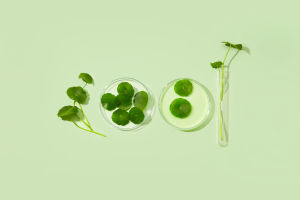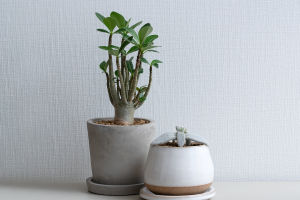Most green plants can be successfully converted from soil to hydroponics.
For those who struggle with watering, maintaining hydroponic plants can significantly reduce the risk of root rot.
However, hydroponic plants have their challenges that need attention. Without proper care, issues such as yellowing leaves or root rot can arise. To ensure healthy growth in hydroponic plants, it’s essential to focus on a few key aspects.
First, temperature plays a crucial role in the growth of hydroponic plants. The ideal temperature range for most hydroponic plants is between 10°C and 25°C. Maintaining a warm, slightly moist environment is important.
If the temperature drops too low, plant growth may stagnate, and leaves could fall off. On the other hand, if the temperature rises too high, the root system might overheat, leading to root rot. To avoid this, it's important to maintain an indoor temperature above 5°C in the cold winter months.
During the summer, when temperatures exceed 30°C, plants should be moved to a cooler area, away from direct sunlight. If possible, sprinkle water around the plants to create a more humid and cool environment.
Next, light is another vital factor for the health of hydroponic plants. While photosynthesis is essential for plant growth, too much light can be harmful in a hydroponic setup. Strong light encourages the growth of green algae in the water container.
If the algae wrap around the plant roots, they can block oxygen absorption, leading to root rot. Additionally, as algae decay, they produce odors, which can further compromise plant health.
To prevent this, place hydroponic plants in a well-ventilated area with bright but indirect light. Especially in the summer, avoid exposing the plants to direct sunlight. In winter, when natural light is weaker, increasing light exposure can help promote growth.
The use of nutrient solutions is also key to the success of hydroponic plants. Unlike soil-grown plants, hydroponic plants rely entirely on nutrient solutions for their growth. However, it’s important not to add the solution immediately after transplanting new hydroponic plants.
Instead, wait until the roots have developed properly before introducing the nutrient solution. The concentration of the solution is crucial. Typically, it should be diluted between 400 to 1000 times before use.
Excessively concentrated solutions can burn the roots. For a 500 ml hydroponic container, only 4 to 5 drops of nutrient solution are usually sufficient. Using too much nutrient solution can do more harm than good.
Water quality is another critical component of maintaining hydroponic plants. Regular water changes help to avoid deterioration in water quality and prevent bacterial growth.
If the water in the hydroponic container turns cloudy or murky, it should be replaced immediately with clean water to keep the roots fresh and healthy. If you are using ceramsite or clay pellets, frequent water changes may not be necessary; instead, you can just add water as it evaporates.
Additionally, the amount of time the roots are submerged in water should be carefully managed. If the roots are in too much water, they can become oxygen-deprived, which may cause root rot. Ideally, only half of the plant’s roots should be submerged in water, with the other half exposed to the air. This helps ensure an adequate supply of oxygen, promoting healthy root growth.
Apart from these basic care principles, the environment where the hydroponic plants are kept should be carefully monitored. While hydroponic plants don’t require as frequent watering as soil-based plants, it’s still essential to replenish the water when the level drops.
In winter, avoid using cold or icy water, as this can shock the plants. When positioning hydroponic plants, ensure that they receive enough light but are not exposed to intense, direct sunlight.
Avoid placing them in closed, airtight environments for long periods, as poor ventilation can harm the plants. In winter, if the air indoors is too dry, misting water around the plants can help increase the humidity, which in turn promotes better growth.
One common issue with hydroponic plants is root rot, which needs immediate attention. When changing the water, inspect the roots and remove any dead or rotten sections. Cutting away damaged parts helps prevent the spread of infection to healthy roots.
Be careful to avoid damaging healthy roots when trimming the rotten areas, as this can affect overall plant growth. If you discover extensive root rot, cut away all the infected sections and soak the plant in a 0.5% potassium permanganate solution to disinfect it. After soaking, rinse the plant thoroughly with clean water before replanting it.
Although hydroponic plants are generally easier to care for than soil-grown plants, many details still need to be considered to ensure their health. With proper environmental control and regular checks for common problems, you can prevent most issues and promote strong, healthy growth in your plants.
Hydroponic plants are an excellent option for enhancing your living space and improving air quality at home, provided you take care of them properly. By mastering these key aspects, you can enjoy the beauty and benefits of hydroponic plants with minimal hassle.


